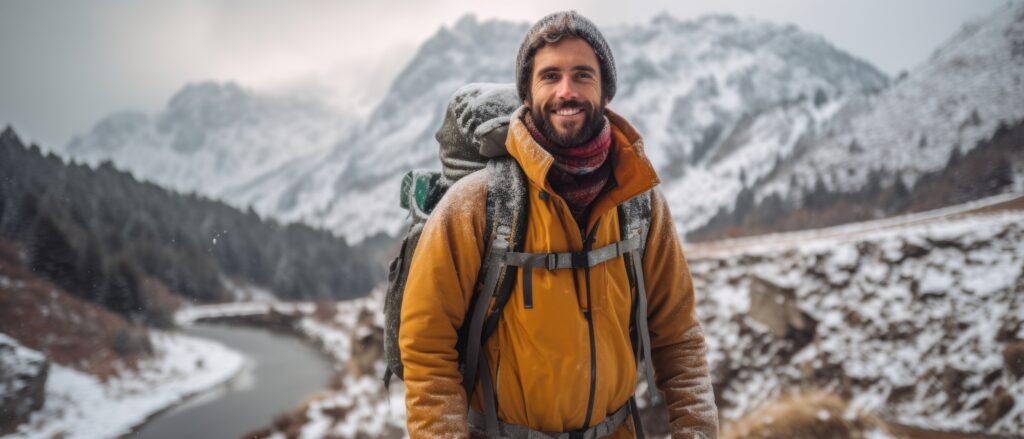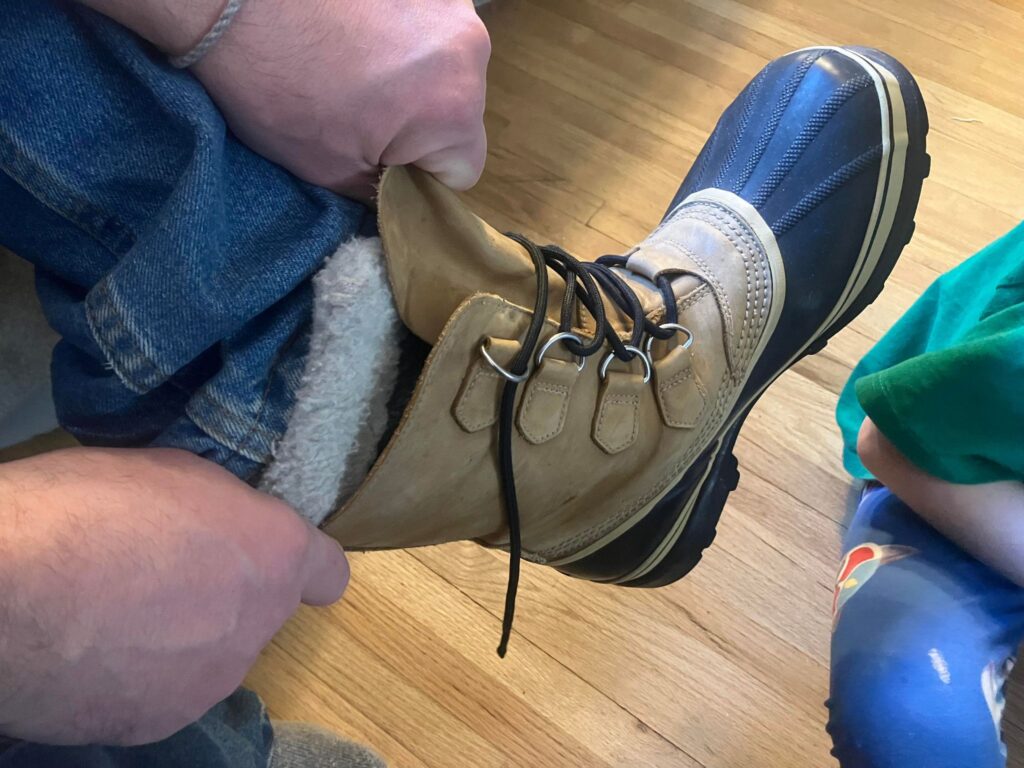Cart

Winter Clothes Layering Fundamentals: Layering is Key
Your Clothing is Your First Line of Defense.
Layering clothes is an effective way to stay comfortable and protected from the elements in various weather conditions. By layering clothing, you can regulate your body temperature, stay dry, and adapt to changing weather conditions. This technique is commonly used in outdoor activities such as hiking, camping, skiing, and mountaineering.
This last week Colorado Springs was hit with a pretty decent snow storm and I had an intro to tracking class to teach early in the morning at a nature center. As I watched the students arrive it got me thinking about this week’s survival tip. As the class progressed and I found myself handing out just as many cold weather tips as I was tracking tips, I decided to focus on a few often overlooked ways to use one of our truly most important survival tools. Namely our first line of shelter, our clothing.
Clothes Layering
In all of our classes, especially the upcoming winter, we spend a bit of time talking about clothing. I am not going to cover our B.R.A.C.E. the C.O.L.D. unit nor talk about the proper 4-layer system of wicking, warming, wetting, and winding. We will have time for that later on and you will hear it in just about all of our live classes.
What I do want to spend some time on is the little things one often only learns by making a mistake, or watching an old timer, who has made a few mistakes.

Outer Clothes Layering
Your snow pants and/or outer windproof layers should be able to be taken off and put on without having to remove your skis, snow shoes, and especially your coat. Take a look at your snow pants right now. Many of you will have an overall style of pants that is warm and waterproof. This is great until you have to remove your pants to poop or pee in the snow. If you cannot bear your butt without removing your coat your pants are no good for long-term outdoor adventures. An ideal pair will zip, button, or Velcro up the side so you can take them off without removing other warm clothing. When trying on clothing ask yourself what would it be like, that is what steps would I have to take, to go to the bathroom if I was wearing this.
Butt Flap For The Win

For almost the same reasons as above we need to be picky with our long underwear clothes layering. If you have a onesie style pair of long underwear then you had better have a butt flap. Now the onesie is great for holding in that warm air we talked about a few weeks ago. But if you have to remove your shirt, coat, and pants to bear your rump; replace them. Also, make sure you have an actual butt flap. These long underwear, are super warm, soft wool. But whatever the heck this is it is not a butt flap.
I learned the hard way that it is neigh on impossible to go number two and wipe without stripping naked in these things. The opening just does not really do the same thing an actual butt flap would do. I prefer two-piece long underwear anyway as they allow you to untuck and pump, remember three weeks ago if you are getting too warm.

Layer Your Lower Legs

Boot gaiters are almost as good as a whole extra layer. In the wet winter months, it is beyond important that snow does not get into the gap between your trousers and boots. Clothes layering to keep snow out of your boots is vital. As with your snow pants, make sure to find a pair that can be taken on and off without the removal of other important layers of clothing.
Boot gaiters are protective gear worn over boots and your trousers to prevent snow, mud, or debris from entering the footwear. They typically extend from below the ankle to the lower calf or below the knee and are secured with straps or elastic bands to keep them in place. Boot gaiters can be made from a variety of materials, including waterproof and breathable fabrics like Gore-Tex or nylon, and can also be insulated for added warmth in cold weather. They are commonly used for outdoor activities such as hiking, mountaineering, skiing, and snowshoeing to keep feet and lower legs dry, warm and clean.
Protect Your Eyes

Sunglasses are more important than most people think. Even on overcast days, ultraviolet radiation is reflected by the snow. Most of the time when people start getting headaches during winter training it has to do with dehydration and/or partial snow blindness. We even spend a bit of time making Inuit sunglasses in the winter and cold weather classes because if you cannot move, you cannot effect a self-rescue. Severe snow blindness will cause you to shut down for about 3 days. Prevention is key here.
Sunglasses should offer side protection to help block out the suns rays from all angles.
Head Wear
Most people know you should wear a hat, but two things often get overlooked with head gear. First you can layer just like you would any other body area. A thin long underwear-type balaclava, then a fleece hat, and finally a fluffy beany, and maybe even a wind proof hood will make you feel like it is 10 degrees warmer in even the worst of weather. Second off, carry a spare! Remember wet is cold and cold is dead. We lose so much water through the day and it is trapped in our clothing.
Bring designated clothing for sleeping
Not only should you have a set of clothing designated for sleeping in, but make sure this clothing is in some type of dry bag and contains a sleeping hat. Now, what if you are in a real survival situation and only have one pair of clothes? Use something like the Cheyenne Fire shelter or the Belmore lay, both in the winter class, to create a super hot fire and microclimate where you can strip naked and completely dry all your clothing for sleeping in.

Don’t Forget Your Hands

While we are talking about layering up, let us not forget the gloves. Your gloves need to protect you from the cold and wet; they must also protect you from the heat of an open fire or stove. A pair of five finger wool inner gloves covered by a leather outer glove can completely change a winter camping experience. If you will be traveling on snowmobiles, or skies or plan to be building snow shelters, consider having a shell glove made of waterproof and windproof material to wear during those activities.
Another quick tip! Its never good to blow on your hands to warm them in the winter. While it might feel good for a moment, you are introducing moisture onto your hands which will cause them to cool rapidly. Instead, remove your gloves and tuck your hands in your armpit or in your belt line and leave them there for as long as possible.
Sleep Gear

Well, I would love to jump into sleeping gear and a few other things but I can see I have burned up enough space as it is. One of the reasons we believe so strongly in experiential learning is you only learn these OMT’s (Old Mountain Tricks) from experience.
We hope you will give a few of these a shot and that they greatly increase your comfort on your cold weather adventures.
Looking for more hands on tips and cold weather training? Check out our Winter Survival Weekend class!
Well, that’s no ordinary rabbit!

Remember, even if you are just watching a rabbit frolic in the snow, there is no such thing as a small adventure.
Stay safe, and warm, out there!
See you on the adventure trail,
Hutch
Did you like these survival tips? Check out more tips and trick on our Wilderness Survival Tips page.
If you are looking for hands on training to learn more about wilderness survival and want to take months if not years off of your learning curve, I suggest you check out our 5 Day Outdoor Survival Basics 101 class!
#survivalskills #survivalgear #wildernessculture #outdooreducation #wildernesssurvival
Leave a Comment
Winter Clothing
Layering clothes is an effective way to stay comfortable and protected from the elements in various weather conditions. By layering clothing, you can regulate your...
Survival Tip – Wool Inserts
A great “in between adventures” project is to make some wool insoles for your boots. You can use scraps from our other projects or swing...

